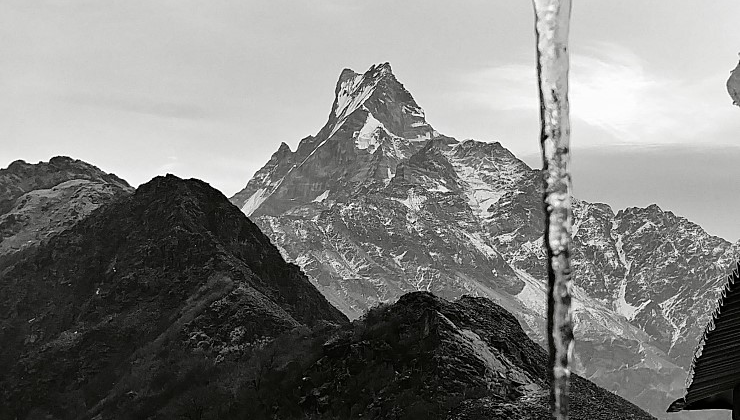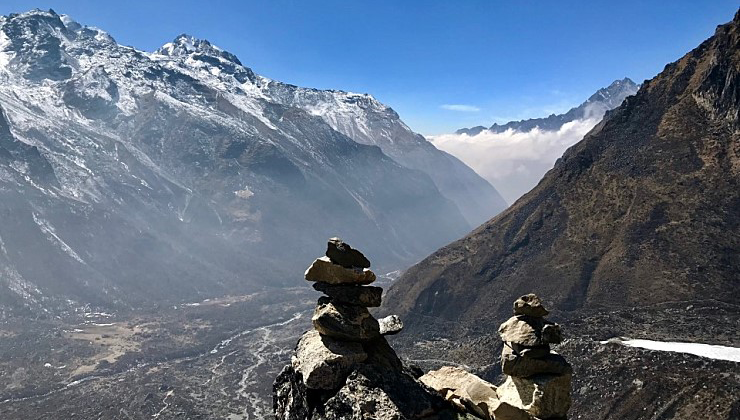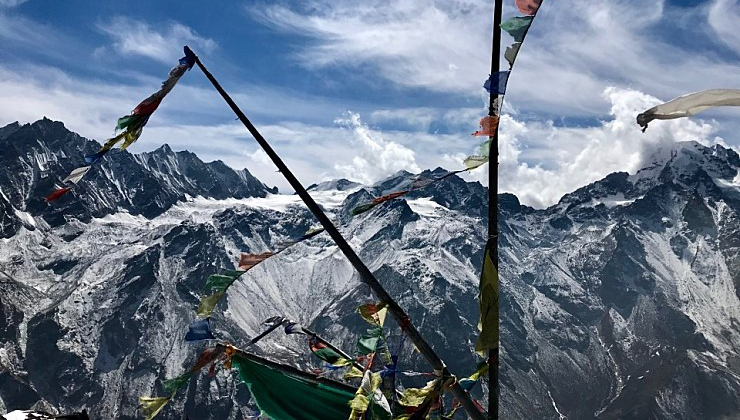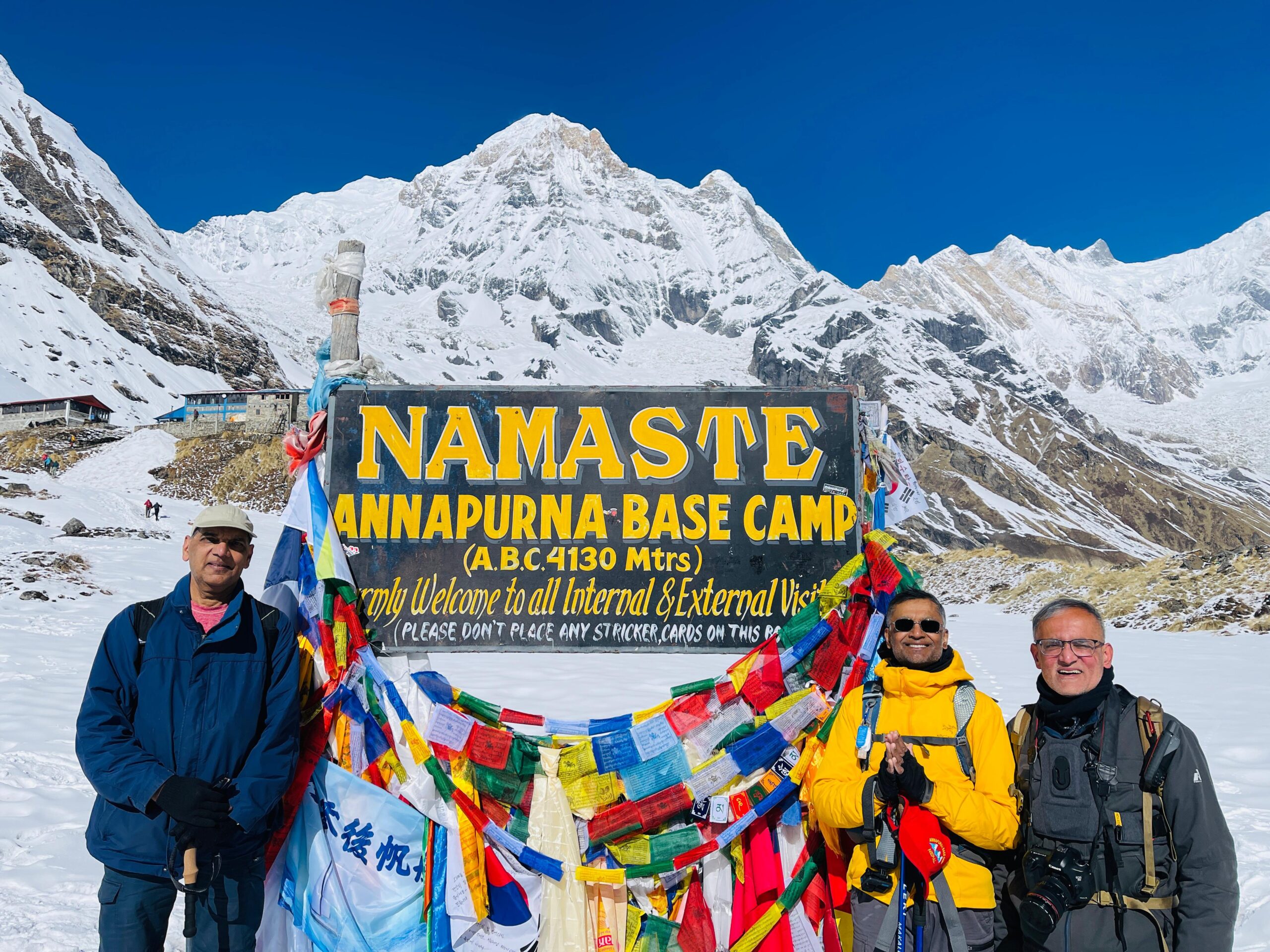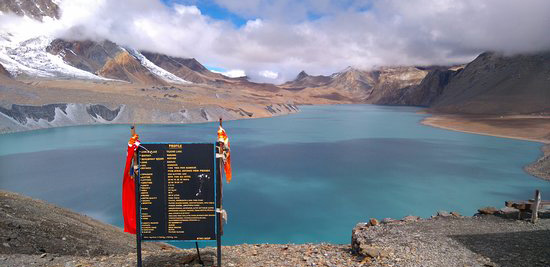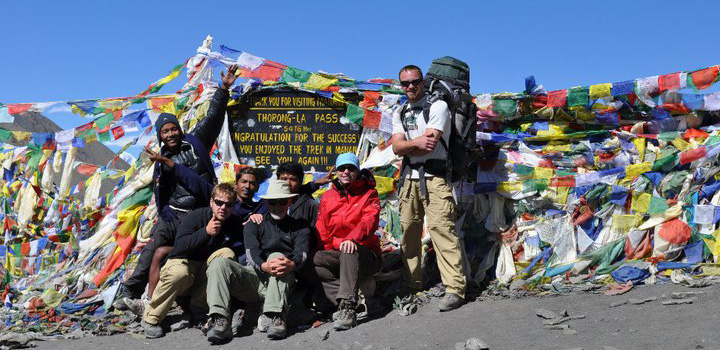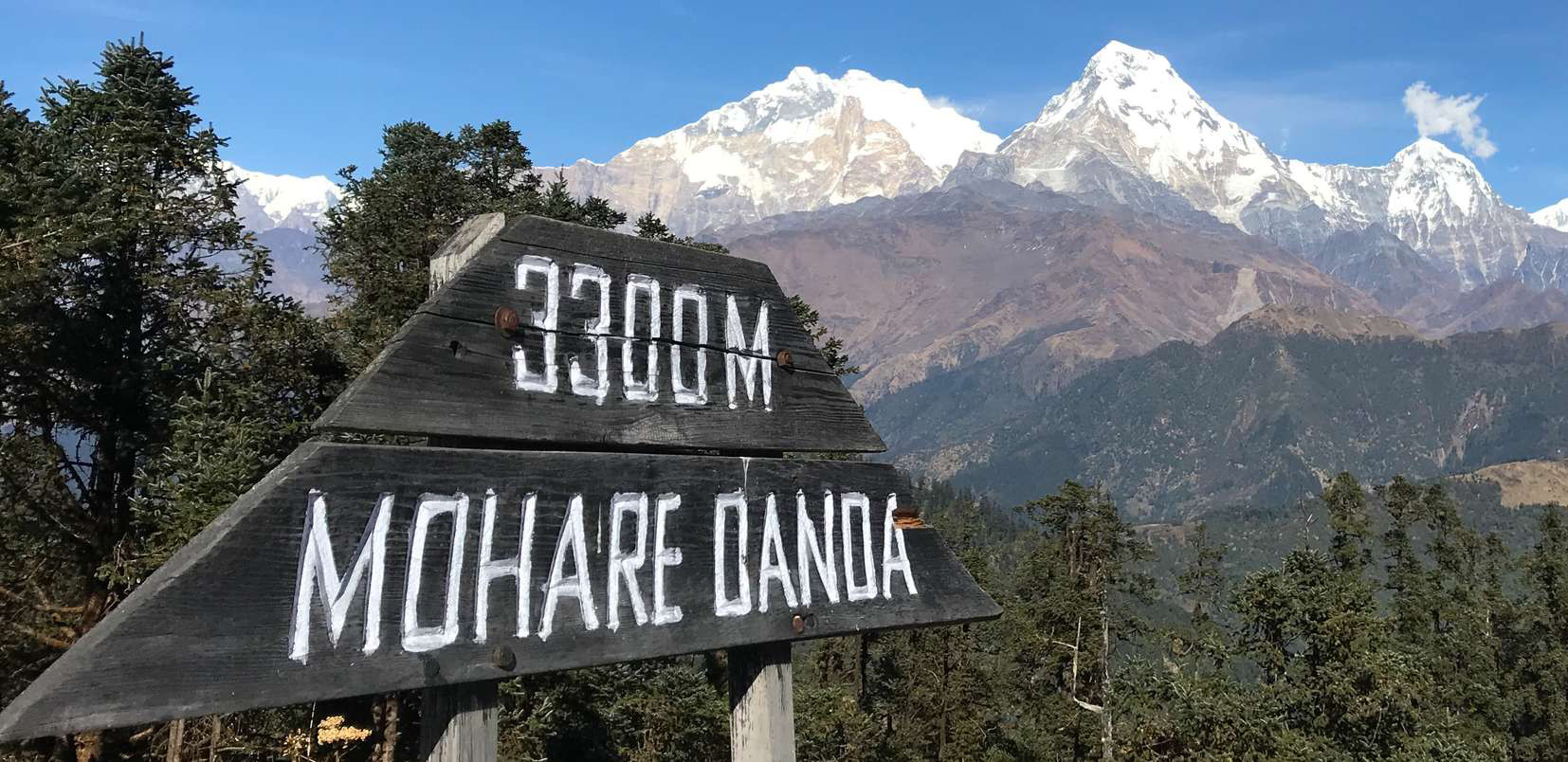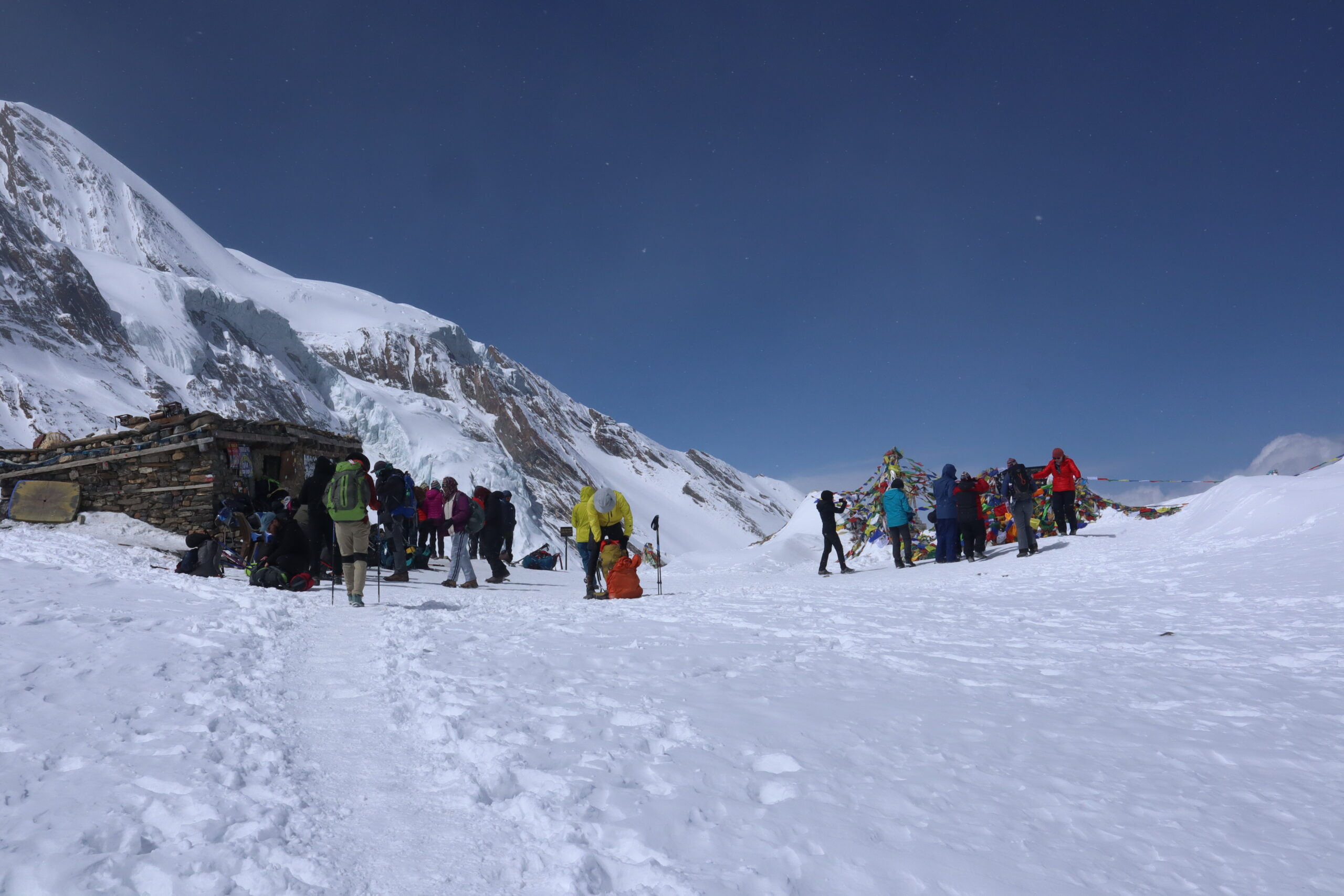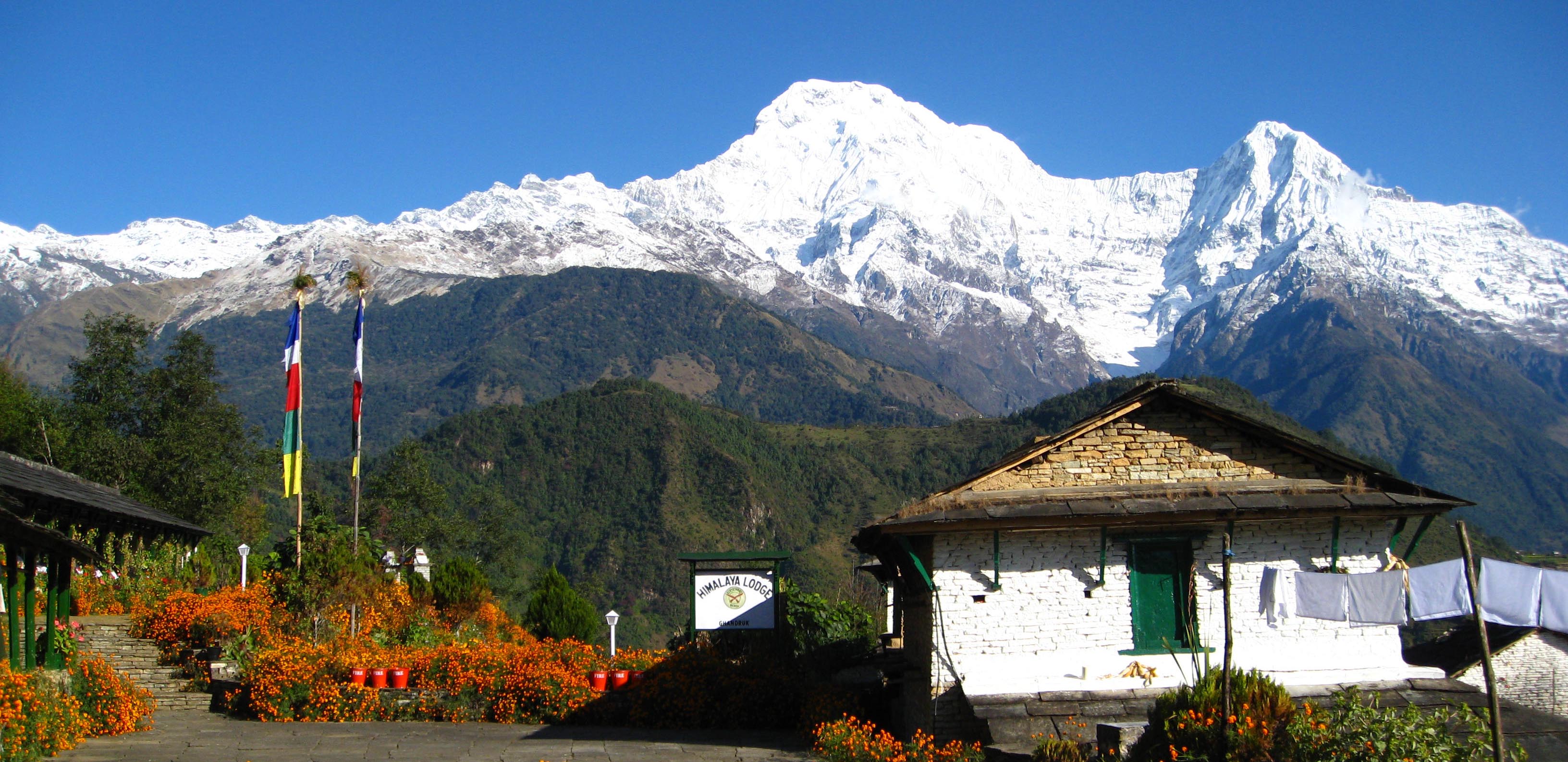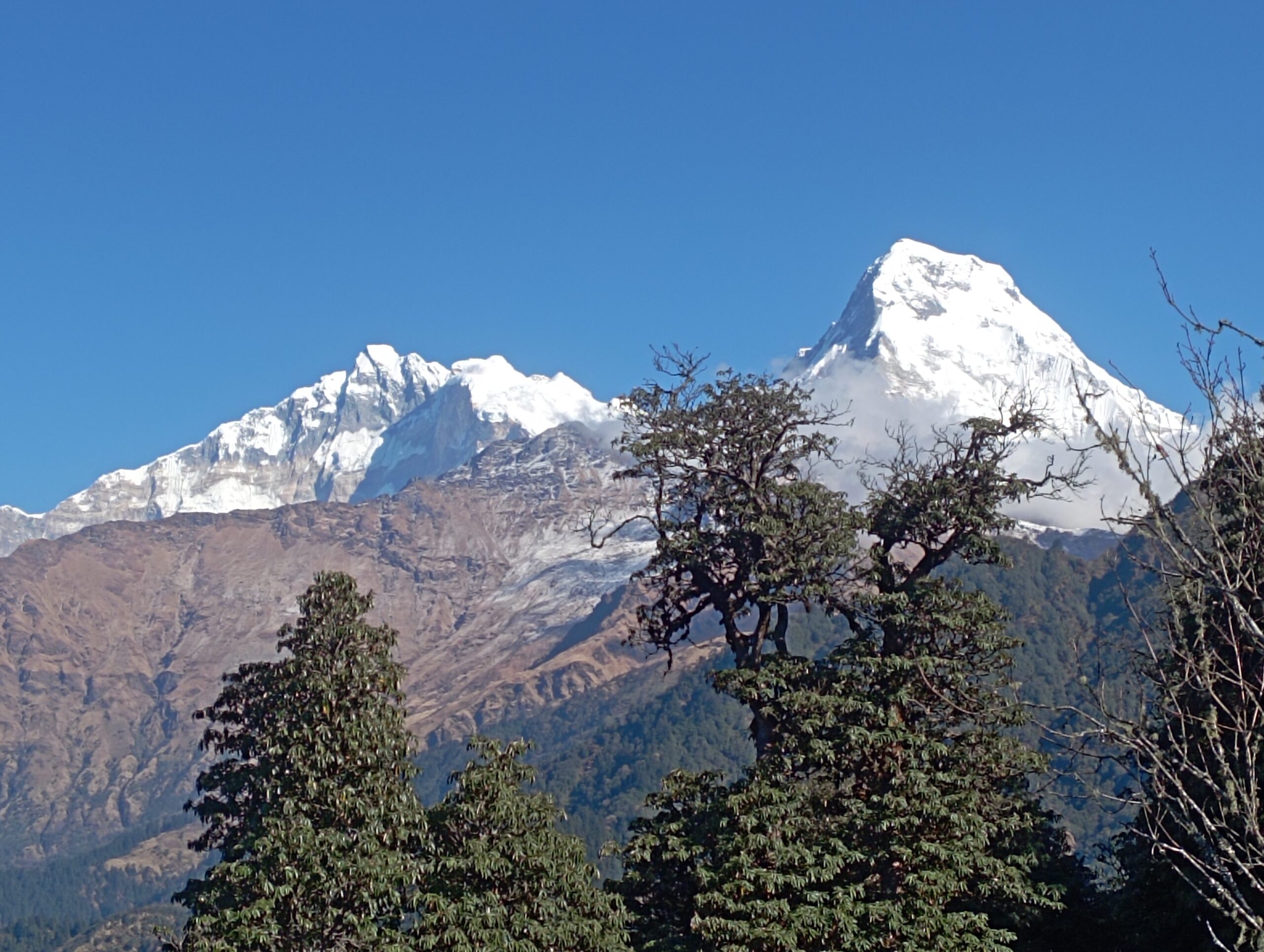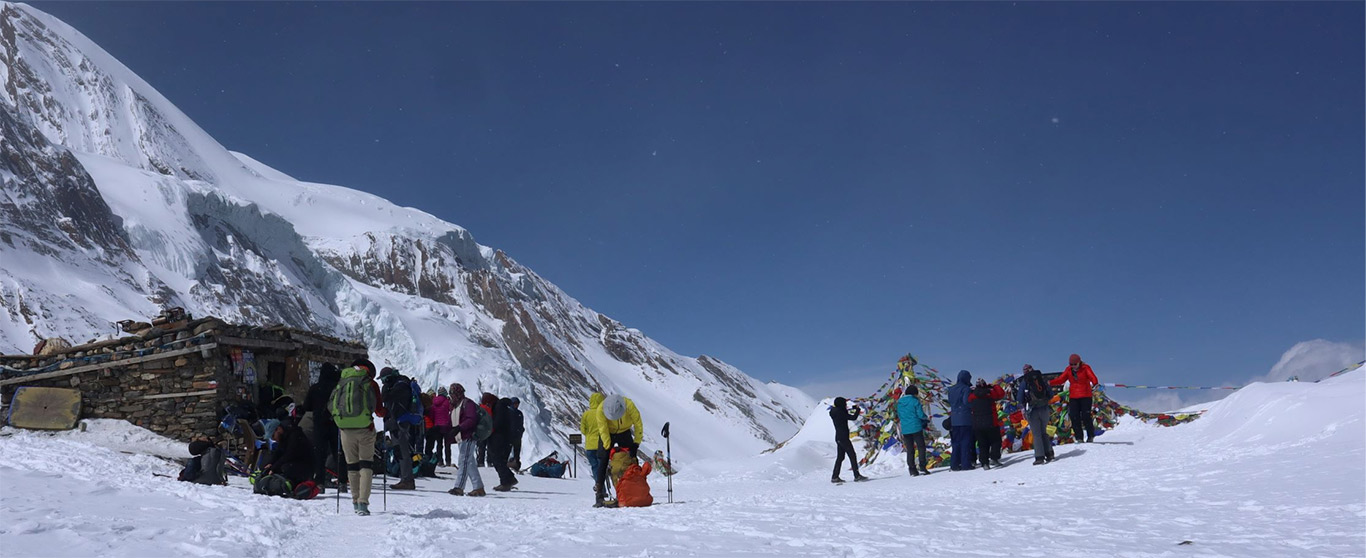Mardi Himal Trek
Mardi Himal Trek is one of the most chosen moderate trekking destinations in Nepal. This trek showcases different shades of the Annapurna massif alongside many others in the region. A well-managed route takes you to the lap of the Himalayas and you can delve into the beauty of Mardi. Passing by small local settlements and peeking into the local art of living, travelers can get a complete trekking experience from this trek. The delightful rhododendron forests and mesmerizing sunset views are added bonuses to the trek. The Mardi Himal trek offers numerous authentic experiences, from visiting local teahouses to staying at homestays along the way.
Located just east of the trail to Annapurna Base Camp, the Mardi Trek has its own beauty to behold. Starting at Phedi near Pokhara, the trail gradually rises to the high hills and alpine forests. Natural viewpoints are abundant throughout the trail. A smooth uphill will lead us to the high camp and beyond to the base of Mardi Himal. Trekkers are gifted with picturesque sceneries and views now and then. A great memorable trek along with photographic scenery of cultural, natural, and stunning views of the Himalayas. Witness the best of Mardi Himal with Himalaya Adventure Sanctuary.
Day 01: Arrival in Kathmandu (1,300m/4,264ft)
Day 02: Kathmandu Valley Sightseeing
Day 03: Drive to Pokhara(820m/2690Ft)
Day 04: Drive to Phedi and Trek to Deurali (2,100 m)
Day 05: Deurali to Forest Camp (2,550 m)
Day 06: Forest Camp to High Camp (3,700 m)
Day 07: Trek to Mardi Himal Base Camp (4,500 m)
Day 08: High Camp to Sidhing (1,700 mt)
Day 09: Sidhing with Pokhara
Day 10: Drive to Kathmandu
Day 11: Departure Day
Day 01: Arrival in Kathmandu (1,300m/4,264ft)
You will be welcomed by our HSA representative at the International Airport and transferred to the hotel in Thamel. Rest, relax and stay overnight at a hotel.
Day 02: Kathmandu Valley Sightseeing (4 – 6hr)
Your guide for the Mardi Trek from Himalayan Sanctuary will pick you up from the hotel after breakfast today. Visit our office for a quick orientation session for the Mardi Himal trek and complete the preparation. From here you will head for a heritage tour of the Kathmandu Valley. You will visit the world heritage sites and beautiful cultural fascinations around the valley today. Some of these might be: –
Swayambhunath Temple: Popularly known as the ‘Monkey Temple’, is one of the amazing oldest heritage sites in Nepal. From the Temple viewpoint at the top, you can have a full-extent view of the Nepalese capital.
Durbar Squares: The major cities of Kathmandu, Bhaktapur, and Lalitpur (Patan) here signify the rich history, art, architecture, tradition, and culture within the Kathmandu Valley and these three Durbar Squares are Nepal’s treasure.
Pashupatinath Temple: The Pashupatinath Temple is one of the most significant Hindu temples in Asia with over 500 small and big shrines, Lingams, and temples in the temple complex.
Boudhanath Stupa: One of the largest stupas in the world and the focal point for Tibetan Buddhism in the Kathmandu valley. One of the best places to relax and take a hint of Buddhist culture is in Kathmandu. We will return to the hotel after sightseeing around the Kathmandu Valley. Stay overnight at Thamel.
Day 03: Drive from Kathmandu to Pokhara
After breakfast, our guide will take you to the bus station near Thamel. You’ll embark on a picturesque drive from Kathmandu to the stunning city of Pokhara via the highway. The beautiful scenery on the way to Pokhara will make your trip wonderful. Stop over for lunch or coffee halfway. You will drive straight to your hotel here and rest for the day. You can enjoy brief strolls to the lakeside vicinity close to your hotel in the evening. Overnight at Pokhara.
Day 04: Drive to Phedi, Trek to Deurali (2,100 m)
The trek starts from Phedi today which is about a 45-minute drive from the Pokhara valley. After reaching Phedi, we will start walking on a bit relaxed trail to Deurali. This well-managed path passes through the iconic Dhampus village. The trail covered with stones leads us to Dhampus village. We will continue the trek to a small rim after having lunch. We will reach the small beautiful village of Deurali after an hour of trekking. We will rest for the day in a lodge/teahouse here. Overnight at Deurali.
Day 05: Deurali to Forest Camp (2,550 m)
Before commencing the trek, take in the stunning sights of Machhapuchhre (also known as “fishtail”) and Mardi from Deurali. A grand and clear view of these peaks in clear weather. We will walk through rhododendron forests and small beautiful villages before reaching the Forest camp. This area is locally known as Kokkar. An amazing view of the natural surrounding scenery from the camp. Stay overnight in the Forest Camp.
Day 06: Forest Camp to High Camp (3,700 m)
A slow uphill walk to High Camp today. Stopping briefly at the low camp we will have our lunch in a teahouse here. As we approach the high camp, we’ll witness a noticeable transformation in the vegetation and landscape. The fantastic views of diverse floras and faunas upon walking around the trail. After three hours of a climb from the low camp will see us reach the High Camp. Overnight at a lodge/teahouse.
Day 07: Trek to Mardi Himal Base Camp (4,500 m)
Early we will start the hike to the Mardi Himal base camp to witness a beautiful sunrise over the snow-capped peaks. The dominating Himalayas in the skyline is magical. We will continue our trek further to the highest point of the trail. Walking on a gradual uphill path we will reach the base camp after a couple of hours. From the base, we can have alluring views of Mardi, Fishtail, Tent Peak, Annapurna Massif, Hiunchuli, Baraha Shikhar, and many other snow-capped peaks of the region. After a fantastic time in the base camp, we will return to High Camp. Overnight at a teahouse.
Day 08: High Camp to Sidhing (1,700 mt )
We will trek back to Pokhara via Sidhing village. Today we will be descending downhill from the High Camp. The views are fantastic from this segment of the walk too. Passing numerous small forests dominated by rhododendron patches we will drop down from the camp. We will go pass through small shrines and monasteries on the way to Sidhing village. Sidhing is one of the major villages in the area and one can get a taste of the village lifestyle here. Rest, relax, and overnight at a hotel/lodge here.
Day 09: Sidhing to Pokhara
We will have an enjoyable downhill walk to Lumre. The breathtaking views of snow-capped peaks, terraced fields, and green hills are refreshing. We will complete this short trek at Lumre back to Pokhara in a cab. Take some time to relax at your hotel after arriving, then venture out to discover the city. You can rejuvenate yourself by visiting the lakeside area and admiring the gorgeous sunset and surroundings. Don’t forget to indulge in some Thakali cuisine and experience the vibrant nightlife of Pokhara. Overnight at a hotel in Pokhara.
Day 10: Drive to Kathmandu
You may visit some local places in Pokhara before returning to Kathmandu. Following breakfast, your guide will accompany you to a nearby bus station where you’ll board a bus back to the capital. Once you arrive, you’ll return to your hotel in Thamel. Explore the lively Thamel market, and purchase some souvenirs shopping in your free time. You are welcome for a farewell dinner and to share your experiences with us. Overnight at a hotel in Kathmandu.
Day 11: Departure
We will receive you at the hotel and depart you to the TIA. We will hope you have some great memories of the Mardi Himal Trek and that the services you get with Himalaya Sanctuary are satisfactory.
Price Included
- Pick up and drops from Airport
- 3-star category Accommodation in Kathmandu and Pokhara including breakfast.
- Teahouse /Lodge Accommodation including Breakfast/Lunch/Dinner during the trek
- Farewell dinner at the end of the Trek
- Kathmandu Valley Sightseeing
- Kathmandu – Pokhara – Kathmandu Transportation by Tourist Coach.
- Himalayan Sanctuary Adventure Duffel Bag
- An experienced English-speaking trek leader (trekking guide), and porters to carry luggage (2 trekkers: 1 porter) including their salary, insurance, equipment, flight, food, and lodging
- All necessary paperwork and permits (ACAP, TIMS )
- A comprehensive medical kit
- All government and local taxes
Price Excluded
- Nepalese visa fee
- Entrance Fee for Sightseeing
- International airfare to and from Kathmandu
- Excess baggage charges
- Lunch and dinner in Kathmandu and Pokhara
- Extra night accommodation in Kathmandu and Pokhara in case of early arrival, late departure, and early return from the mountain(due to any reason) than the scheduled itinerary
- Travel and rescue insurance
- Personal expenses (phone calls, laundry, bar bills, All kinds of hot and Cold drinks, battery recharge, extra porters, Tea, Coffee, bottle or boiled water, Wi-Fi, hot shower, etc.)
- Tips for guides and porters
Our main paramount is to offer a safe and enjoyable trek for your clients. Experienced trekkers will often take only a selection of these items based on what has worked in the past. Please find the Clothing and Equipment List below for your personal use during your traveling period.
Footwear:
Walking boots, Wool and liner socks, sandals Clothing: Waterproof jacket and trousers, Trekking trousers, Long sleeve shirts, Micro fleece, Mid to heavyweight fleece, Sleeveless or body warmer type fleece, Thermals or base layer for top & bottom (merino wool or synthetic), Fleece pants, Medium weight down jacket
Hand wear:
Fleece gloves, Warms mittens, and/or gloves
Head wear:
Wool or fleece hat, Sun hat, Scarf, Head torch, extra batteries, Sunglasses
Personal Equipment:
Sleeping bag, Backpack large enough to carry water bottles, camera, and extra clothing, Stuff sacks for keeping your gear dry and organized, two water bottles (Nalgene wide mouth bottles are the best), Sunscreen, and lip salve with a high SPF, Insect repellent, Water purification tablets (Pristine, Biox Aqua or Aqua Mira), Favorite snack food, Trekking poles, Camera with spare batteries and memory cards, Insurance certificate.
Traveling:
Bring a small combination padlock to secure the bag, Travel clothes. You will need casual clothing for air travel days and time spent in Kathmandu, Toiletry bags include toilet paper, soap, towels, toothbrush, etc.
Personal first aid kit:
For any personal medications, Diamox (optional) helps with acclimatization.
Each trekker should carry one backpack for items required during the day. Your day backpack will contain items such as warm clothes, a jacket, a camera, water bottles, and personal first aid kit, and day snacks. The maximum weight allowance is 15 kg/33 pounds
- What type of shape do I need to be in, is this trip for me?
The Mardi Himal trek is suitable for average people who are moderately fit, thus no previous experience is required. Some physical fitness programs such as running, swimming, and hiking is recommended before you embark on your journey.
Persons suffering from a pre-existing medical condition must seek medical advice/consent before considering the trek. Whilst on the trek, it is common to experience some discomfort before being fully acclimatized. - Is it possible to reserve a trip now and pay a deposit later or do I Have to pay a deposit at booking/reservation?
Yes! The trip will be confirmed only when we receive the completed final booking form and a 30% deposit payment. You can pay the balance of the money when you arrive in Kathmandu. - Will somebody come to pick me up from the airport upon my arrival?
Yes, our representative from Himalayan sanctuary adventure will be there displaying your name outside the arrival terminal then you will be transferred to your hotel overnight. - What sort of accommodation can I expect in Kathmandu, Pokhara, and trekking ?
We use standard rooms at 2-star Category hotels in Kathmandu and Pokhara including breakfast Along the trekking routes, teahouses/lodges generally provide basic clean facilities with a mattress and a quilt or blanket. We recommend you have sleeping bags, it is a good idea to always have your sleeping equipment. The lodges in trekking routes usually provide single and double rooms, or occasionally a dormitory style. At times when possible, dining will be around a bonfire. In teahouses, food will be prepared in the kitchen, which you should not enter without permission. The toilet in teahouses provides essential and basic facilities and is always outside the room. - Are the guesthouses heated?
The guesthouse does not facilitate with heater or air conditioner. However as it gets colder above 3,500m, they do have the facility of hitting the dining area by providing kerosene or metal heater. USD 1 to USD 3 per person would be applicable to use this service and this is payable directly to the guesthouse. - Where do we go to the toilet along the trail?
Wherever possible we utilize the toilet facilities provided by the tea houses/lodges on the trail. However, in case of emergency trekkers are recommended to find a private, scenic spot! - What are the Toilet facilities in the tea house/guesthouse?
Most of the tea houses do have western-style flushing toilets however tea houses at higher elevations you could find the squat toilets made of either a ceramic basin on the ground or a few planks precariously positioned over a hole in the ground which is always outside. - What is the best season for this trekking?
Our trekking season extends from mid-September to May. From early September the monsoonal rains decrease. By the end of September through to December, the weather is usually stable with mild to warm days, and cold nights. February, March, April, May, October, November, and December is the best time to do the Mardi Himal trek. - Is the food in the mountain prepared to international standards in terms of safety?
Yes, the food is very safe during the trekking but we recommend you eat vegetarian and local food. Please follow the suggestion of our guide on the trek. - Is water provided and is there water for drink available at higher altitudes? Is it filtered/boiled?
Bottled water is easily available at the lodges and tea houses so you can buy bottled water at the cost of USD 1 up to USD 3. You can also drink the normal tap or spring water if you bring the purifying aid with you. - Is there a possibility of getting separate rooms for the trip? If so how much extra will this cost?
Normally the lodges have twin-sharing and dormitory-styled rooms. The lodges will provide a private room for one person when available. In Kathmandu, USD 45 Per Room per Night would be added as a single supplement fee. The single supplements are always guaranteed in Kathmandu but not in the mountains especially during the peak time. - What immunizations will I need?
No vaccinations are compulsory in the Himalayas, but we do recommend you are covered for diphtheria, TB, hepatitis A, hepatitis B, Malaria, typhoid, polio, and tetanus. We also recommend to you know your blood group in case of an emergency. - What if I am very sick in the mountain?
Our guides are 24 hours available for services during the trek. They are trained to use the first aid kit and have the knowledge to use an Oxy meter. Guides carry local sim cards for both Nepal Telecom and Ncell to update the whereabouts and the situation of every client. During the time of emergency, our guides are alert and keep updated with the head office in Kathmandu that is available 24 /7 to arranging from horses to mules or helicopters in the most needed cases especially when the client is seriously sick in the mountain and needed to be hospitalized. - Can I obtain a visa for Nepal upon arrival at the airport?
Yes, you can obtain a visa easily upon your arrival at Tribhuvan International Airport in Kathmandu. A tourist Visa with Multiple Entries for 30 days can be obtained by paying US $ 40 or equivalent foreign currency. Similarly, a Tourist Visa with Multiple entries for 90 days can be obtained by paying US $ 100. Please bring 2 copies of passport-size photos. - How much additional money do I need per day?
It depends on your spending habits. Generally, in Kathmandu and Pokhara, you can allocate USD 10 to USD 15 for lunch and dinner. USD 20 to USD 30 per person a day will be enough to buy meals, bottles of water, and chocolates, pay for the hot shower, and a few drinks during the trekking. - Can I use credit cards in the places I visit in trekking?
In Kathmandu and Pokhara, yes – to some extent. Once you are out of the cities, all you need is cash. Please change the currency to local Nepali Rupees before you go to the mountains. - What mode of transportation do you use?
We provide you only those options, which enhance your local experience while allowing you to travel comfortably and efficiently. We use private tourist vehicles for sightseeing, city tours, and pick-ups. Depending on the group size we use cars, minibus, vans, and tourist bus to and from Kathmandu/ Pokhara.
| Start Date | End Date | Price in USD | Availability | Booking | Note |
|---|
Avabillity Options
OPEN: This date is available and open for bookings. Go for it!
GUARANTEED: Guaranteed departure. Seat Available.
LIMITED: Guaranteed departure, Limited seat. You can send booking request for availability.
FULL:This date is currently unavailable. Please contact us if you are interested in traveling on this date.

